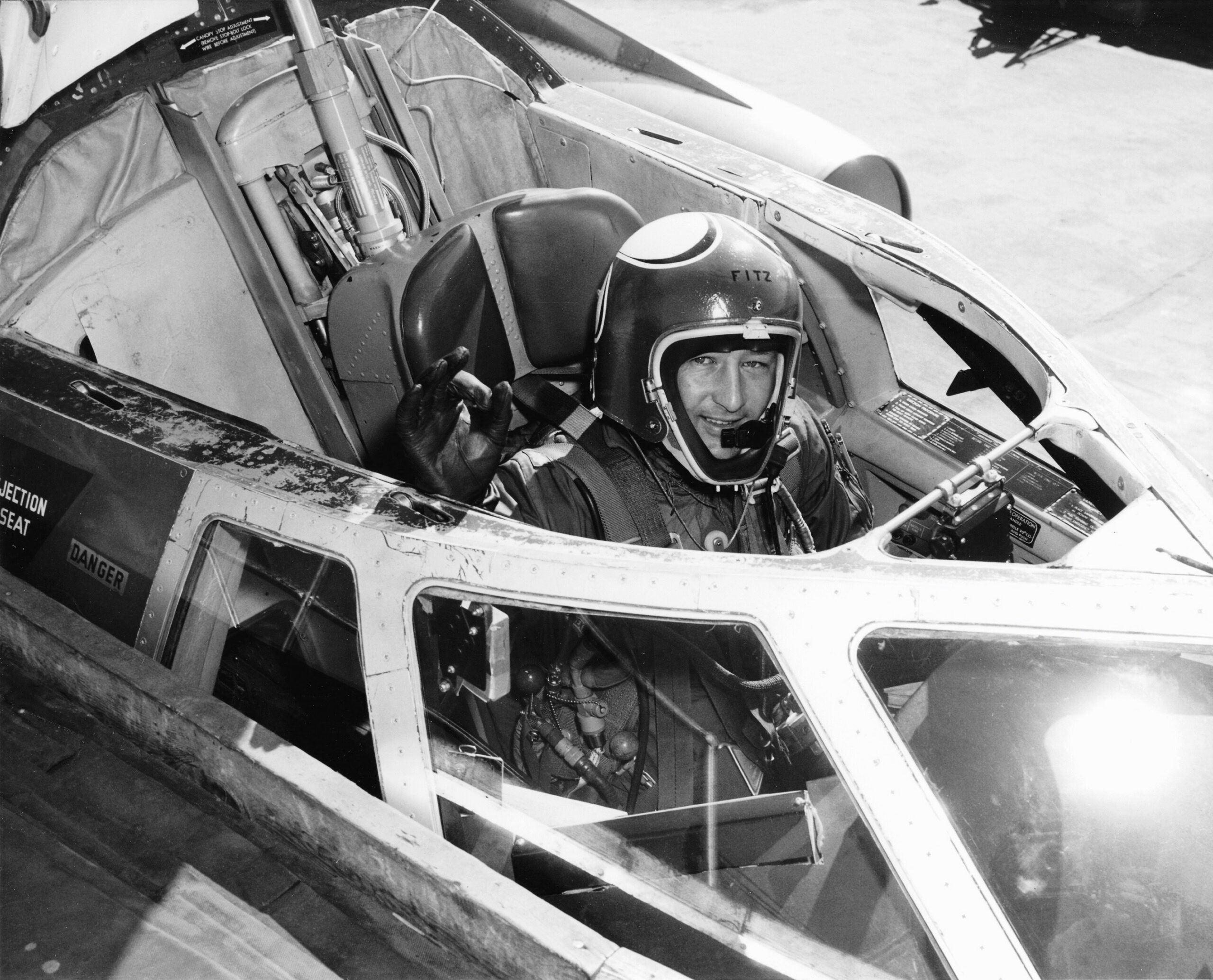

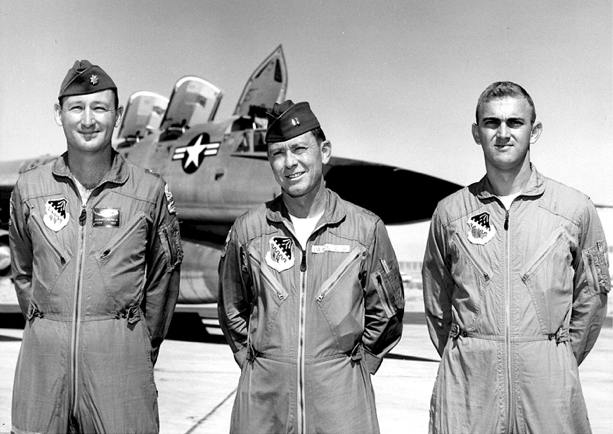
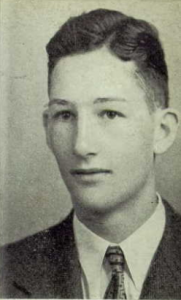
Fitzhugh Lee Fulton, Jr., was born 6 June 1925 at Blakeley, Georgia. He was the son of Fitzhugh Lee Fulton and Manila T. Fulton. He graduated from Columbus High School, Columbus, Georgia, in 1942. He later studied at Auburn University, Auburn, Alabama, and the University of Oklahoma, Norman, Oklahoma (just south of Oklahoma City). he graduated from Golden Gate University, San Francisco, California.
Fitz Fulton married Miss Erma I. Beck at Tucson, Arizona, 16 December 1945.
He entered the U.S. Army Air Corps in 1943. He flew the Douglas C-54 Skymaster transport during the Berlin Airlift and Douglas B-26 Invaders during the Korean War. Fulton graduated from the Air Force Experimental Test Pilot School in 1952. He served as project test pilot for the Convair B-58 Hustler supersonic bomber. At Edwards AFB, he flew the B-52 “motherships” for the X-15 Program. He flew the North American XB-70A Valkyrie to more than Mach 3. When Fulton retired from the Air Force in 1966, he was a lieutenant colonel assigned as Chief of Bomber and Transport Test Operations.
Fitz Fulton continued as a test pilot for NASA, flying as project pilot for the YF-12A and YF-12C research program. He flew all the early test flights of the NASA/Boeing 747 Shuttle Carrier Aircraft and carried the space shuttle prototype, Enterprise. By the time he had retired from NASA, Fulton had flown more than 16,000 hours in 235 aircraft types.
Fitzhugh Lee Fulton, Jr., died at Thousand Oaks, California, 4 February 2015, at the age of 89 years.
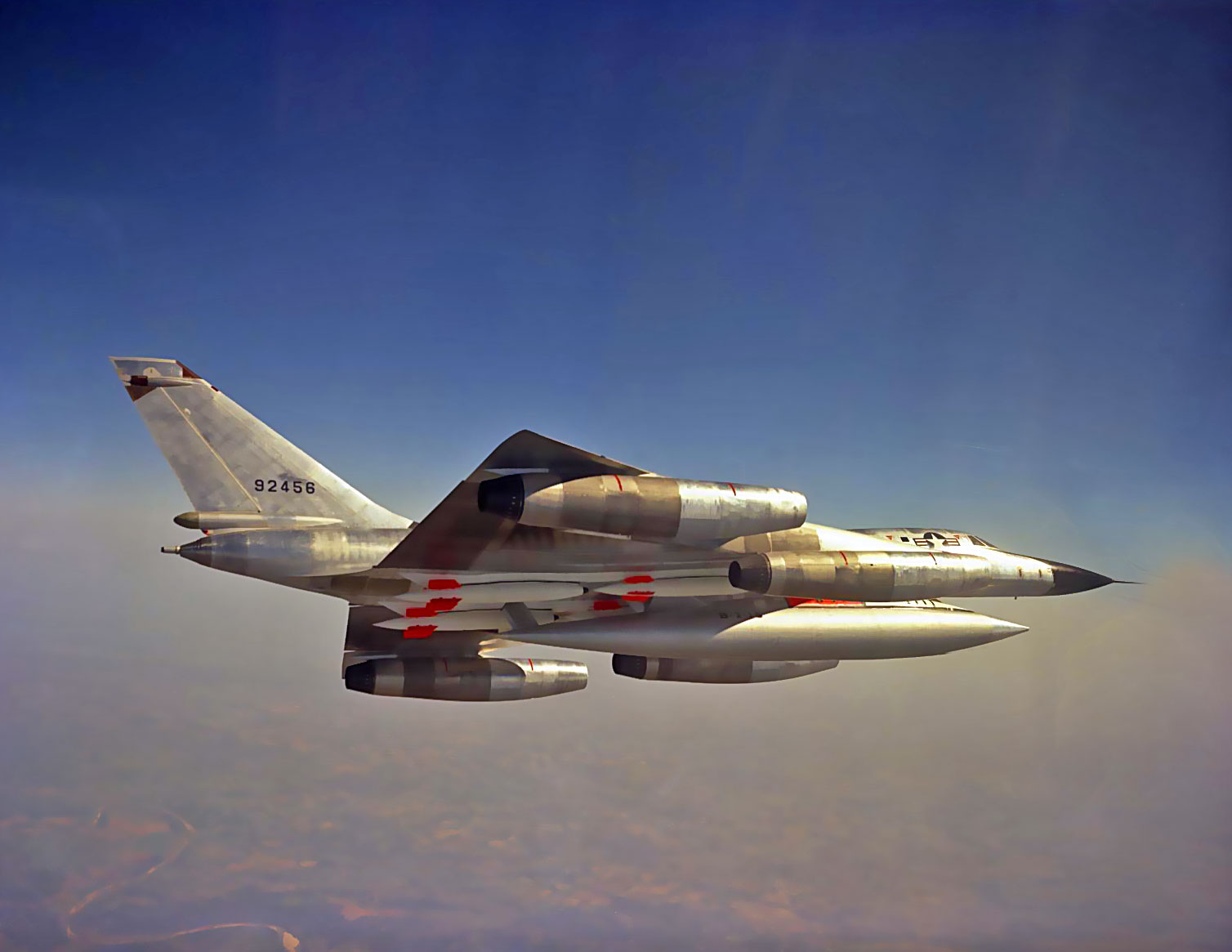
The B-58 Hustler was a high-altitude Mach 2 strategic bomber which served with the United States Air Force from 1960 to 1970. It was crewed by a pilot, navigator/bombardier and a defensive systems operator located in individual cockpits. The aircraft is a delta-winged configuration similar to the Convair F-102A Delta Dagger and F-106 Delta Dart supersonic interceptors.
The Hustler is 96 feet, 10 inches (29.515 meters) long, with a wing span of 56 feet, 10 inches (17.323 meters) and an overall height of 31 feet 5 inches (9.576 meters). The wing’s leading edge is swept back at a 60° angle and the fuselage incorporates the “area rule” which resulted in a “wasp waist” or “Coke bottle” shape for a significant reduction in aerodynamic drag. The airplane’s only control surfaces are two “elevons” and a rudder, and there are no flaps.
The B-58A was powered by four General Electric J79-GE-5 axial-flow afterburning turbojet engines, suspended under the wings from pylons. This was a single-shaft engine with a 17-stage compressor and 3-stage turbine, rated at 10,300 pounds of thrust (45.82 kilonewtons), and 15,600 pounds (69.39 kilonewtons) with afterburner. The J79-GE-5 was 16 feet, 10.2 inches (5.136 meters) long and 3 feet, 2.0 inches (0.965 meters) in diameter.
The bomber had a cruise speed of 610 miles per hour (981.7 kilometers per hour) and a maximum speed of 1,325 miles per hour (2,132.4 kilometers per hour). The service ceiling is 64,800 feet (19,751 meters). Unrefueled range is 4,400 miles (7,081 kilometers). Maximum weight is 168,000 pounds (76,203.5 kilograms).
The B-58 weapons load was a combination of a W-39 warhead, and/or Mk.43 or B61 nuclear bombs. The W-39 warhead, the same used with the Redstone IRBM or Snark cruise missile, was carried in a jettisonable centerline pod, which also carried fuel for the aircraft. The smaller bombs were carried on underwing hardpoints. For defense, there was a General Electric M61 Vulcan 20×102 mm six-barreled rotary cannon mounted in the tail, with 1,200 rounds of linked ammunition, controlled by the Defensive Systems Officer.
Convair B-58A-10-CF 59-2456 was assigned to the 43rd Bombardment Wing at Carswell Air Force Base, Texas until 1969 when it was placed in storage at Davis-Monthan Air Force Base, Tucson, Arizona, 9 December 1969. The record-setting strategic bomber was scrapped 1 June 1977.
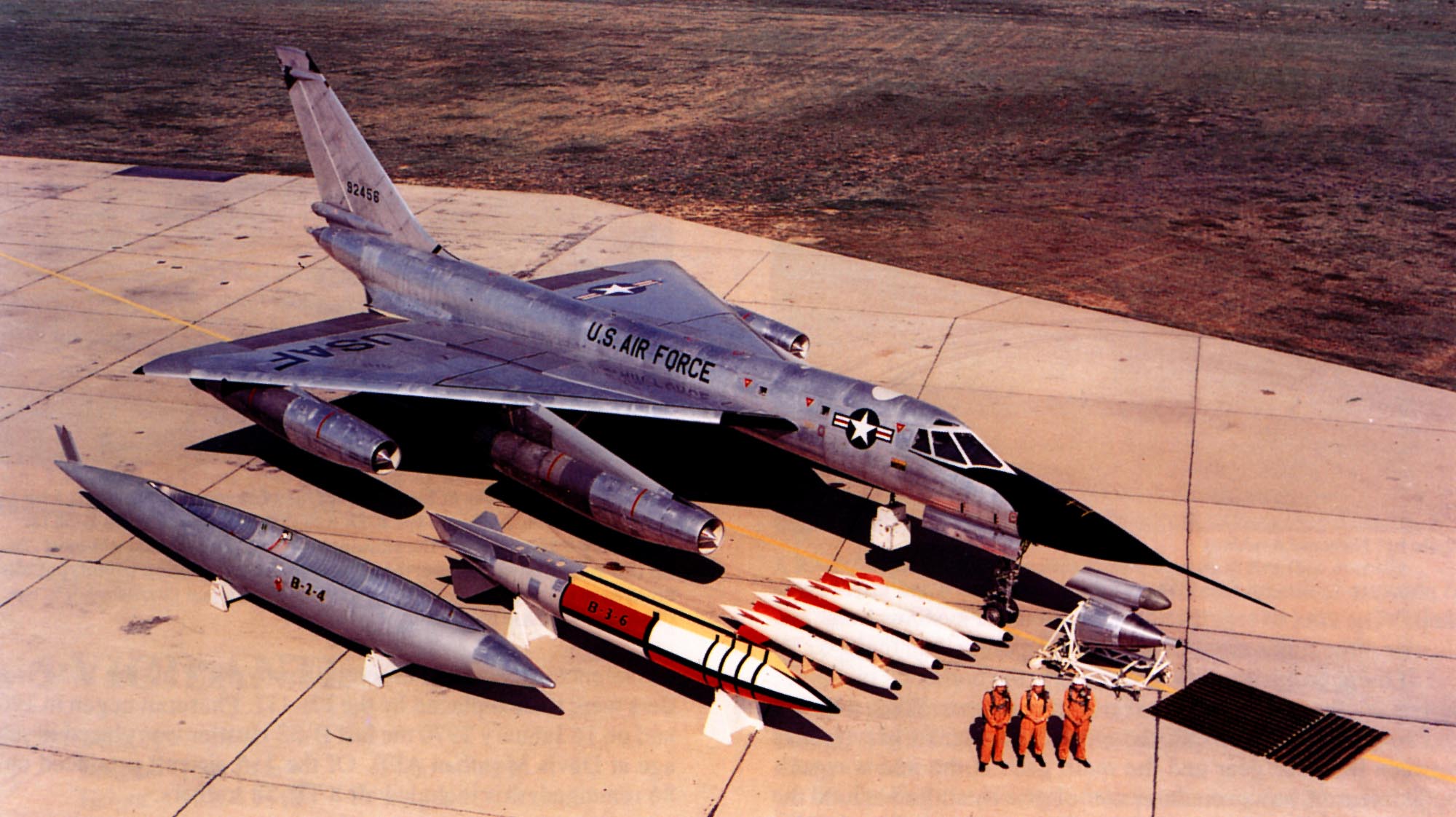
¹ FAI Record File Number 14656
² FAI Record File Number 14652
© 2017, Bryan R. Swopes
You have got to be an outstanding pilot to have such a record and survive it!!!!
RIP.
Yes. “Fitz” was called “the Dean of Test Pilots.”
Bryan- The last image is fascination, but there are lots of unidentified items. In particular, do you have any idea what the device is next to the nose? It appears to be an alternative radome, but with some appenage. I’ve never seen anything about it regarding the B-58.
That object is the detachable tail gun module. It has a small radome just above the Vulcan barrels. The black rectangle in front of that is the ammunition: belts of 20mm cannon shells laid out in parallel. The four small bombs are B43s. The W39 warhead is contained inside the centerline pod, which could be “stacked” with the larger fuel pod. (Note the recess in the large pod.) The B-58 was a fascinating airplane, in some ways ahead of its time.
I see it now – it just looked odd facing the wrong way at the pointy end of the aircraft. Thanks!
Thank you for sharing! Very informative
Bryan, vos documents photos sont extraordinaires, je suis fan du B-58, depuis mon enfance, quand le “the fire fly” c’est crashé au Bourget le 03 juin 1961, j’avais 10 ans.Cordialement
Merci beaucoup, François.